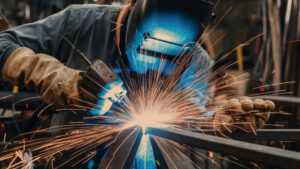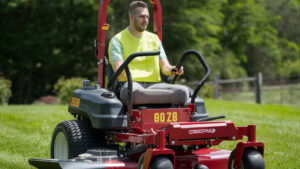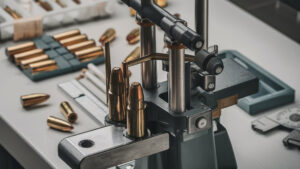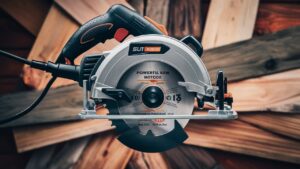Polishing brass can be a rewarding task. Using a wet tumbler makes the job easier and more efficient.
In this guide, we will explore how to operate a wet tumbler for polishing brass. Whether you are a beginner or have some experience, this guide will help you understand the steps involved. A wet tumbler is a great tool to achieve shiny, clean brass.
It uses liquid and media to polish brass items, such as casings. Knowing how to use it correctly can save you time and effort. This guide will walk you through the process, ensuring your brass comes out looking its best. Ready to learn more? Let’s dive in!
Introduction To Wet Tumbling
Wet tumbling is an effective method for polishing brass. It involves using water, cleaning agents, and a rotating drum. This technique is popular among gun enthusiasts and jewelers. It delivers shiny, polished brass with minimal effort.
What Is Wet Tumbling?
Wet tumbling uses a drum filled with water, cleaning agents, and brass pieces. The drum rotates, causing the brass to collide with cleaning media. This process cleans and polishes the brass. It is different from dry tumbling, which does not use water.
Benefits Of Wet Tumbling For Brass Polishing
Wet tumbling offers several advantages. It provides a thorough clean. Water and cleaning agents reach every corner of the brass. This removes dirt and tarnish effectively. The process is also faster than other methods. You save time and get better results.
Another benefit is reduced dust. Dry tumbling creates dust that can be harmful. Wet tumbling minimizes this issue. It is safer and cleaner to use. Additionally, the finished brass is often shinier. The water and cleaning agents help achieve a high polish. Your brass looks almost new.
Essential Equipment
Brass polishing with a wet tumbler requires essential equipment. Use a reliable tumbler, stainless steel pins, and a quality cleaning solution for best results. Keep your brass shiny and clean effortlessly.
To operate a wet tumbler for brass polishing, you need certain essential equipment. These tools ensure that your brass comes out clean and shiny. Each piece of equipment plays a crucial role in the process. Let’s dive into what you’ll need.
Choosing The Right Tumbler
A quality tumbler is key. Wet tumblers come in various sizes and shapes. Choose one that fits your needs. Consider the capacity. Smaller tumblers work well for hobbyists. Larger ones are better for bulk polishing. Look for durability. Stainless steel parts last longer. Noise levels matter too. Some tumblers are quieter than others. Read reviews. User experiences can guide your choice.
Selecting The Best Media
The media used in your tumbler affects the polishing results. Stainless steel pins are popular. They clean brass efficiently. Ceramic media is another option. It polishes brass to a high shine. Plastic pellets can be used for delicate items. Choose media based on your brass type. Different media have different effects. Experiment with small amounts first. Find what works best for your needs.
“`
Preparing Brass For Tumbling
For brass polishing, wet tumblers provide an efficient solution. Start by cleaning brass, removing debris. Next, add brass, water, cleaning solution, and media to the tumbler.
Preparing brass for tumbling is a crucial step. It ensures optimal results and extends the life of your brass. Proper preparation involves cleaning, sorting, and inspecting the brass. Let’s dive into the details.
Initial Cleaning Steps
Before placing brass in a wet tumbler, it needs initial cleaning. Remove any dirt, grime, or residue. You can use a brush and mild soap. Rinse thoroughly to ensure no soap remains. Dry the brass completely before moving to the next step.
Sorting And Inspecting Brass
Sorting brass is essential for efficient tumbling. Separate brass by caliber and type. This prevents damage and ensures uniform polishing. Inspect each piece carefully. Look for dents, cracks, or deformities. Discard any damaged brass to avoid issues during tumbling.
Setting Up The Tumbler
Setting up your wet tumbler is crucial for effective brass polishing. A well-set tumbler can make your brass shine like new. Follow these steps to ensure you get the best results.
Adding Media And Brass
First, add the tumbling media to the drum. Use stainless steel pins or ceramic media. These are best for cleaning brass. Fill the drum halfway with media.
Next, add the brass casings. Make sure the brass is not too dirty. Dirty brass can clog the tumbler. Fill the drum to about three-quarters full. This allows room for movement and cleaning.
Mixing Cleaning Solutions
Choose a suitable cleaning solution. Many prefer a mix of water and dish soap. Some use a tablespoon of lemon juice for added shine. Others add a small amount of a specific brass cleaner.
Pour the cleaning solution into the drum. Ensure the solution covers the brass and media. Do not overfill. The drum should have some air space. This helps in the tumbling process.
Seal the drum tightly. This prevents leaks during operation. Your tumbler is now ready to start. Follow the manufacturer’s instructions for the best results.
Tumbling Process
The tumbling process is essential for polishing brass. It removes tarnish and debris. A wet tumbler is the best tool for this task. It uses liquid and abrasives to clean brass efficiently. Let’s break down this process into important steps.
Optimal Tumble Time
Finding the optimal tumble time is crucial. Too short, the brass stays dirty. Too long, and it may damage the brass. Start with a 2-hour cycle. Then, check the results. Adjust the time based on the brass condition.
Monitoring The Process
Monitoring the process ensures quality results. Check the tumbler every 30 minutes. Look for signs of wear. Ensure the brass is not over-polished. This keeps your brass in good shape and extends its life.
Post-tumbling Steps
After successfully tumbling your brass, the next steps are crucial. Proper post-tumbling steps ensure your brass pieces are clean, dry, and shiny. Let’s dive into the key actions you need to take.
Rinsing And Drying Brass
First, remove the brass from the tumbler. Use a sieve to separate the brass from the media. This will make rinsing easier. Next, rinse the brass under running water. Make sure you remove all residue. A thorough rinse prevents any build-up on the brass.
After rinsing, dry the brass completely. Use a towel to pat the brass pieces dry. You can also use a hairdryer to speed up the drying process. Ensure each piece is dry to avoid water spots. This helps maintain the shine and prevents tarnishing.
Inspecting Polished Brass
Once the brass is dry, inspect each piece carefully. Look for any remaining dirt or spots. A magnifying glass can help you see small details. Check the brass for uniform shine. This ensures all pieces are polished evenly.
If you find any dull spots, consider another round of tumbling. This will help achieve a consistent finish. Proper inspection guarantees high-quality, polished brass.
Maintenance And Care
Proper maintenance and care are essential for a wet tumbler. Clean the drum and check seals regularly to ensure efficient brass polishing. Use mild detergents and avoid harsh chemicals to prolong the machine’s life.
Maintaining and caring for your wet tumbler is essential for achieving optimal results in brass polishing. Proper maintenance ensures the longevity of your equipment, saving you time and money. It also guarantees that your brass items come out sparkling clean every time.
Cleaning The Tumbler
Regular cleaning of your tumbler is crucial. After each use, empty the drum and rinse it thoroughly with water. This prevents residue buildup that could affect your brass polishing.
Use a mild detergent to clean the drum and lid. Avoid harsh chemicals that could damage the tumbler’s components. A soft brush can help reach tricky spots inside the drum.
Inspect the motor and moving parts. Wipe them clean with a dry cloth. Dust and debris can hinder performance, so keeping these parts clean is a must.
Storing Tumbling Equipment
Proper storage is just as important as cleaning. Store your tumbler in a dry, cool place. Moisture and extreme temperatures can damage the equipment over time.
Keep all accessories and supplies organized. Use labeled containers for media, brass items, and cleaning products. This makes your tumbling sessions more efficient and enjoyable.
Cover the tumbler when not in use. Dust and dirt can accumulate quickly. A simple cloth cover or plastic wrap can protect your investment.
Taking these steps ensures your wet tumbler remains in top condition. How do you maintain your tumbling equipment? Share your tips and experiences in the comments!
—
Note: HTML tags were included as requested.
Expert Tips And Tricks
Operating a wet tumbler for brass polishing can be incredibly satisfying, especially when you see your brass pieces gleaming like new. However, the process can sometimes be tricky. Here are some expert tips and tricks to help you achieve the best results and avoid common pitfalls.
Common Mistakes To Avoid
One common mistake is overloading the tumbler. Overloading can prevent proper cleaning and polishing. Make sure to follow the manufacturer’s guidelines on the maximum load capacity.
Another mistake is using the wrong cleaning solution. Not all solutions are suitable for brass. Using the wrong one can damage your pieces. Stick to solutions recommended for brass polishing.
Also, avoid running the tumbler for too long. Excessive tumbling can wear down the brass. Aim for the optimal time suggested in your tumbler’s manual.
Enhancing Polishing Results
To enhance your polishing results, use a mix of stainless steel media. Different shapes of media, like pins and balls, can clean and polish more effectively.
Adding a few drops of dish soap can improve the cleaning power of your solution. It helps break down any stubborn grime on the brass.
Don’t forget to change the water regularly. Fresh water ensures better cleaning results and prevents re-depositing dirt onto your brass pieces.
Have you ever tried adding a bit of car wax to your solution? It can give your brass a brilliant shine and add a protective layer. Just a small amount works wonders.
Remember to inspect your brass regularly during the tumbling process. This helps you gauge progress and avoid over-polishing.
What are some tricks you use with your wet tumbler? Share your experiences and tips in the comments below!
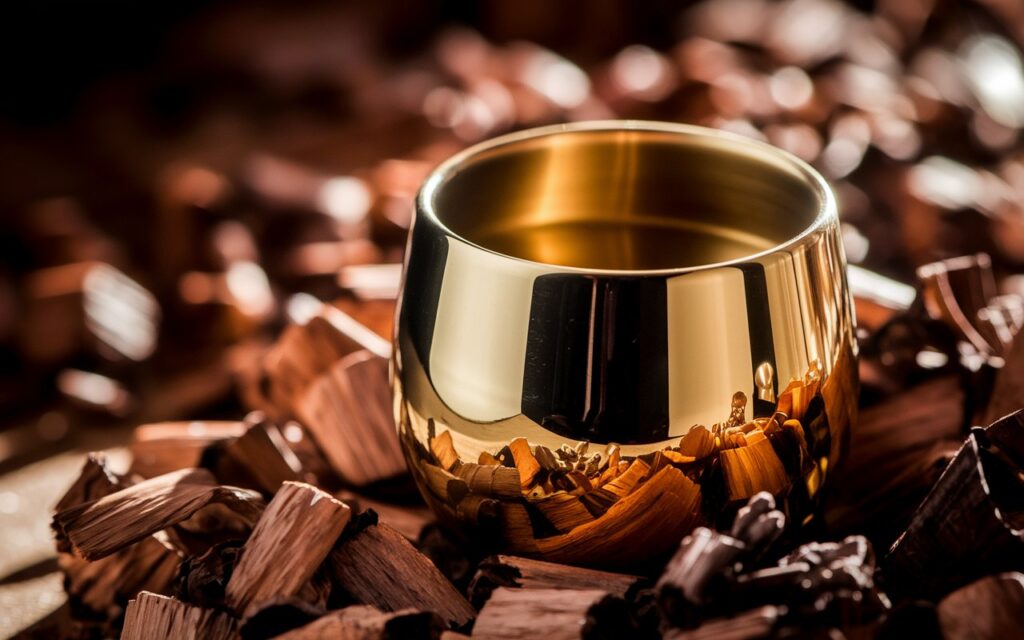
Frequently Asked Questions
How Long Do You Wet Tumble Brass For?
Wet tumble brass for 2-4 hours. This duration ensures a thorough clean, removing dirt and tarnish effectively.
What Media Is Best For Wet Tumbling Brass?
Stainless steel pins are best for wet tumbling brass. They clean efficiently and reach all parts of the brass.
Does Wet Tumbling Damage Brass?
Wet tumbling does not damage brass. It effectively cleans and polishes brass casings, making them shine like new.
How Long Does It Take To Polish Brass In A Tumbler?
Polishing brass in a tumbler typically takes 2 to 4 hours. Time varies depending on brass condition and media type.
Conclusion
Polishing brass with a wet tumbler can be simple and effective. Follow the steps carefully. Use the right materials and tools. Take your time to achieve the best results. Regular cleaning extends the life of your brass. Enjoy the shine and improved performance.
Happy tumbling!

